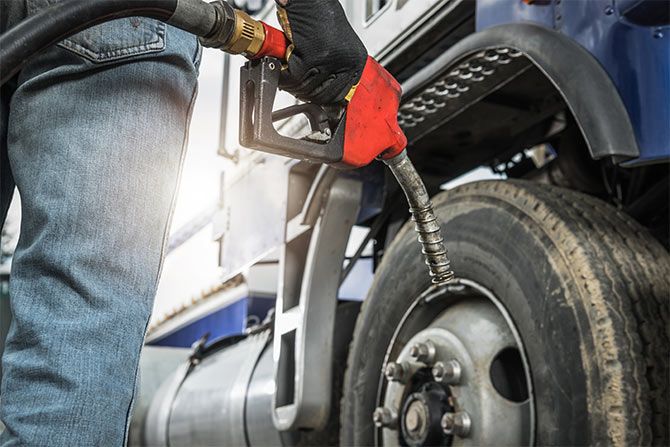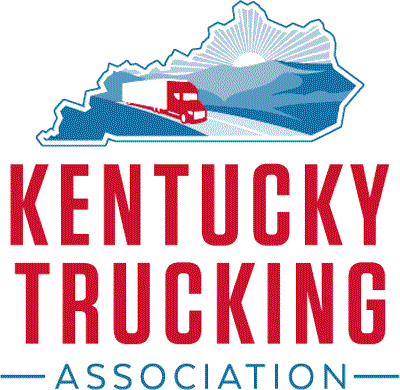Our research at the association indicates that 89.2% of Kentucky’s communities depend on the truck drivers who bring stores the goods they sell. That makes our industry vitally important to everyone’s quality of life.
Being important doesn’t mean the job is simple, though. We must overcome obstacles daily. Some of the biggest problems include truck driver shortages, regulatory changes, deteriorating infrastructure, safety concerns such as COVID-19, and managing the logistics of variable costs and cash flow.
I’ve chaired the board of directors for two years now. During that time, KTA has had significant challenges:
- The lingering COVID-19 pandemic, which all of us would like to move past
- The biggest and fastest fuel cost increases in history
- Supply chain issues on parts that have caused extreme price increases
- Truck shortages that make it necessary to wait for the trucks we order now
- The highest inflation in 40 years, increasing interest rates and the threat of recession
- A continuing driver shortage that has become a regular part of running a trucking company
That’s just a partial list, but I hope it gives you a big-picture industry overview. Let’s talk about the big problems I listed above in more detail.
Driver Shortages
You may have heard or read news stories about a national truck driver shortage. One recent article said there are 80,000 more jobs than there are drivers. In Kentucky, many veteran drivers have retired or are retiring, and young drivers must be 21 or older before crossing state lines. However, the Infrastructure Investment and Jobs Act has changed the rules slightly; we now have a probationary period for drivers 18-21; after probation ends, young drivers can drive longer routes alone. Employers continue to monitor them until they are 21, even after the probationary period.
Trucking professionals are going to high school job fairs, some schools offer CDL training, and an advisory team is working to increase the number of women truck drivers.
Trucking can be a good career. The average annual salary is $47,000, and longtime drivers can earn more than $100,000. You can earn enough to support your family well. Most careers don’t give you that kind of money for nothing; however, even though trucking can be difficult, the Federal Motor Carrier Safety Administration limits the workweek for CDL drivers to about 60 hours.
Regulatory Changes
Naturally, regulations are an ever-changing part of life for trucking companies. Three bodies issue new regulations: the Department of Transportation (established in 1966), the National Highway Safety Administration (1970) and the Federal Motor Carrier Safety Administration (2000).
New fuel efficiency standards are being phased in. The process started in 2021 and will also affect trucks in 2024 and 2027. Trucks must be registered, and motor carriers need operating authority to cross state lines. Many drivers need a DOT number, too, for interstate vehicles weighing more than 10,000 pounds. There’s a fee to operate across state lines and qualifications for drivers to meet. Drivers must comply with drug and alcohol testing, physicals and enhanced entry-level driver training regulations.
It’s a lot. And we haven’t even touched on everything else that could change, such as upcoming regulations on truck speed limits, hours of service changes and changing emission standards.
Deteriorating Infrastructure
Several different factors cause U.S. infrastructure problems. These include underinvestments in public works programs, lack of management and short-term thinking. Fortunately, the $1 trillion bipartisan bill President Joe Biden signed in November 2021 will help. Kentucky received a C- from the American Society of Civil Engineers. More than 1,322 highway miles and 1,033 bridges are in poor condition in the state. Since 2011, commute times increased 6.3%, and drivers paid $444 annually for costs incurred by driving on bad roads. However, between now and 2026, Kentucky expects $5.1 billion to spend on highways and bridges. Another $69 million, spread over five years, is expected to finance the expansion of the state’s EV charging network. All that money should make a substantial difference and make work easier for drivers.
Safety Concerns
What can I say about the pandemic that hasn’t already been said multiple times? We’ve been dealing with it in Kentucky since March 6, 2020. As I write this column, numbers have been spiking again. The old saying is that visitors and fish stink after three days; more than two years after the initial shutdown, it’s no wonder people struggle with pandemic fatigue.
Everyone I know wants to end all pandemic restrictions, but we can’t yet because the danger isn’t over. We have new vaccines on the horizon, and we know COVID has become a fact of life. But KTA is always committed to driver safety, whether it’s related to COVID or other health issues. We will always do our best to protect every employee in the industry as much as possible.
Logistics Management
Most people probably don’t appreciate the complexity of transportation logistics or the difficulty of making sure money is available when and where it’s needed. If you are involved in logistics, though, you know how hard it can be to solve transportation problems, and you appreciate the hard work, intelligence and skill of those who make it all look so easy to people outside the industry.
Conclusion
I’ve talked more about problems than solutions in this column, but I want you to know how happy I am to be involved in this important industry. We make a difference, and our work matters. Never forget it.
Please call me if I can help you or if you have suggestions that would help me and other KTA leaders. It is always an honor to serve you.
Thanks,
Dewell Gossett









